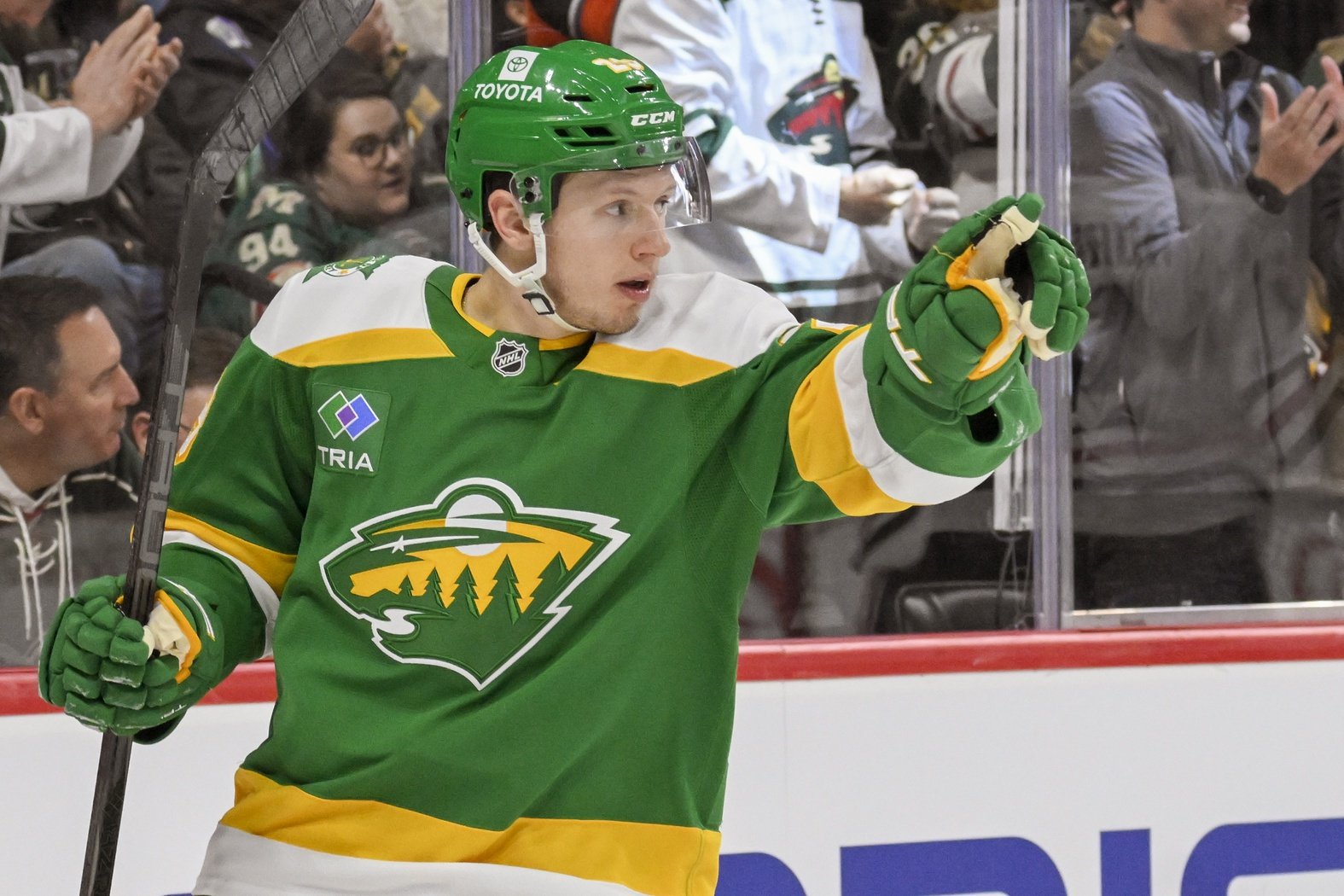
The Minnesota Wild have an underreported problem coming up.
Its name is 2026-27 cap space.
It’s clear why that’s not the A-topic in Wild circles right now. There are juicier stories that will pay off much sooner: Kirill Kaprizov’s extension, Marco Rossi’s RFA status, and Danila Yurov's arrival, to name a few.
More than that, Wild fans just don’t want to hear about another cap crunch in only the 2nd season after the Parise/Suter buyout penalties.
As a bit of relief, note that this crunch is only projected; it isn’t yet on the books. The looming issue can be identified on the second line. Marco Rossi needs an extension or a replacement, Mats Zuccarello will need a replacement in ‘26-27, and Marcus Johansson is not an acceptable solution on the 2nd line. Even if Danila Yurov and Liam Ohgren both can produce second-line quality by 2026, that still leaves one expensive hole in the top six.
So, why not make your cost-controlled second-line center part of the solution to that cap crunch?
It’s no secret that Rossi is on the outs with the organization. NHL insider Michael Russo has been hinting at it for months, and now he’s putting it in print. This isn’t just rumors and opinions. The team offered Rossi a five-year, $5 million AAV contract, which is cheap enough to be borderline insulting. Even given his RFA status, I estimated Rossi’s annual market value on a four-year deal to be around $7 million.
Adding his first UFA year into the deal (not to mention his age-28 season, one of his prime producing years) should only increase the AAV.
To take this offer more professionally than an insult, perhaps Rossi’s agent could consider it less of an offer than a jumping-off point for negotiations. However, Russo also reported that “Rossi’s camp countered with a shorter-term bridge deal at a larger AAV, which went nowhere.” That makes $5x5 look less like a jumping-off point and more like a suggestion to jump off the team.
What’s especially maddening about a shorter-term offer going “nowhere” is that it’s precisely the creative maneuver that could solve the Wild’s upcoming salary cap crunch. A two-year deal would set Rossi up for life and allow Minnesota to return to the table with him in the 2026 offseason. More importantly, that’s probably the best method of lowering Rossi’s ‘26-27 cap hit, since it only buys Rossi’s age-24 and -25 seasons.
A two-year deal would schedule Rossi for another extension that starts in the middle of his prime; furthermore, he could sign it as early as July 2026. That would provide Rossi with security within a calendar year while reducing his ‘26-27 cap hit. He'd return to the table under a totally new salary cap environment.
Instead, negotiations have stalled. That seems to be the nail in the coffin for a player who has never found his footing in this organization.
Then again, footing is hard to find when one’s legs keep getting kicked out from underneath. It’s difficult to imagine what Rossi could have done to ingratiate himself with this organization. He’s spent offseasons away from home training with Minnesota’s coaches. That’s not required of any player, but perhaps Minnesota feels that’s part of setting a championship standard. So, he at least meets expectations in that regard.
How about this for exceeding expectations: dragging an aging, injured roster through the season from hell and into the playoffs?
Sure, he didn’t do it alone. Brock Faber and Matt Boldy took on huge roles before the return of Kirill Kaprizov and during Jonas Brodin and Jared Spurgeon’s absences. Even still, Rossi stepped into a top-line center role on a team with little help on either of the top two lines, and he produced significantly better than in his 2023-24 season.
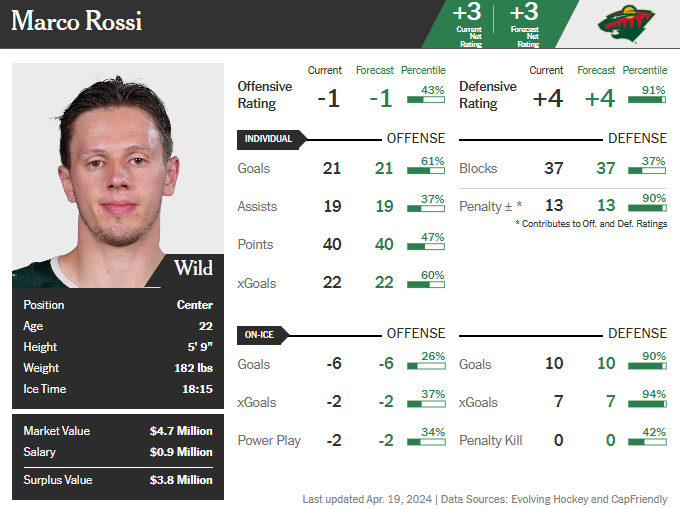
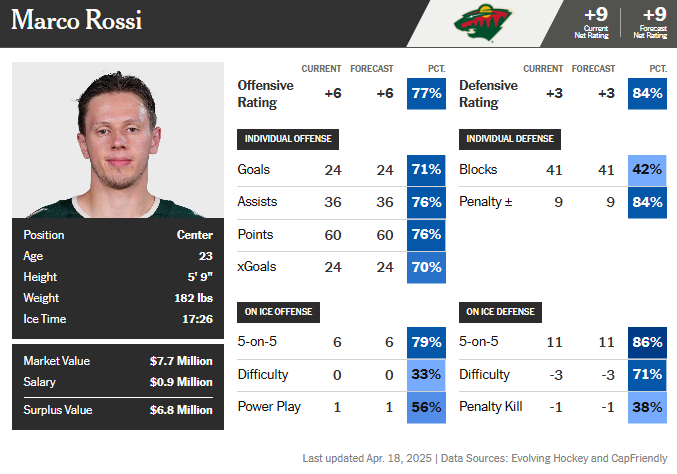
The only good-faith explanation to the Wild’s rumored intention to trade Rossi is that they think this season was an outlier. It actually explains five years at a $5 million AAV quite nicely. If Rossi was running unsustainably hot this season, and factoring in the team’s leverage during his next four seasons as an RFA, perhaps that offer is an acceptable starting point.
If that’s their logic, selling high on Rossi in a trade makes sense.
However, that’s an aggressive strategy if the goal is a Stanley Cup window. Not only are the Wild betting against their own asset, but they’re introducing the risk of an offer sheet. While they could be in line to acquire a first- and third-round pick in a Rossi offer sheet, those picks won’t align with their aspiration to open a championship window.
By the time those 2026 draft picks make significant contributions, Spurgeon and Brodin will be well past their primes. Paydays will be due for Danila Yurov, Zeev Buium, and David Jiricek (if those players pan out). They’ll need replacements for Joel Eriksson Ek, Mats Zuccarello, Ryan Hartman, and Jake Middleton. An offer sheet would essentially subtract Marco Rossi from any championship window and push that value into the next GM’s tenure.
In other words, if Guerin’s potential trade partners in a Rossi trade prefers to spend the offer sheet compensation, they can wait him out. If the Wild lose that game of chicken, they may have to kiss that Cup window goodbye.
Still, moving on from Rossi presents an opportunity. Packaging Rossi with another roster player or a prospect such as Liam Ohgren could open a serious two- or three-year window to chase a Stanley Cup. Packaging all three could reshape the entire roster.
Perhaps that’s the bottom line on Rossi’s story in Minnesota. He’s not part of a larger vision, and even the most creative short-term deals don’t leave enough cap space to realize that vision.
That still raises questions about Minnesota’s management over the past several seasons. Why bring in Judd Brackett to draft undersized producers like Rossi, Buium, and Riley Heidt if that doesn’t fit into management’s vision for a championship?
Credit Bill Guerin for making the pick and giving Rossi a chance, but what more could Rossi have realistically accomplished to stick around?
I’m not the first person to ask these questions. If Rossi reaches new heights in his prime as a second- or first-line center, or if the Wild continue to exit the playoffs early, they’ll be raised again.
On July 1, Marco Rossi will become eligible for an offer sheet. Four days before, all 32 NHL GMs will be together in Los Angeles for the 2025 draft. If Rossi isn’t extended or traded by the end of draft weekend, Guerin could find himself at the mercy of his 31 colleagues and Rossi’s agent. That would be a tangible failure.
Trading Rossi could become just as great a failure, but at least it allows Guerin to realize his vision for a championship-caliber roster. It could also create enough flexibility under the ’26-27 salary cap to keep that team together for more than one year.
The 2026-27 cap crunch won’t keep Minnesota from making the playoffs, but it’s the lens through which every move this offseason should be examined. It’s also the last obstacle between this franchise and a long championship window.
Think you could write a story like this? Hockey Wilderness wants you to develop your voice, find an audience, and we'll pay you to do it. Just fill out this form.
-
 3
3
-
 2
2

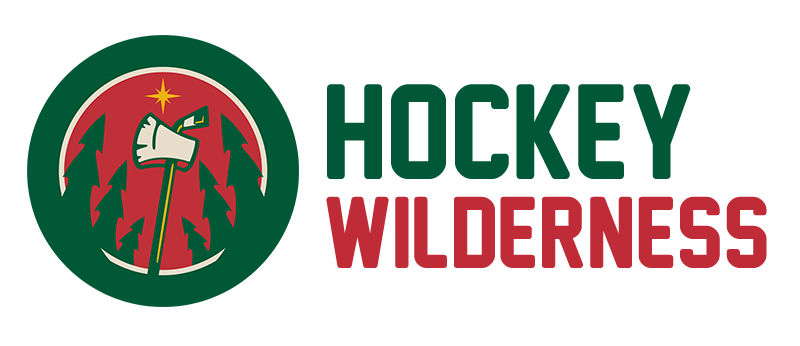


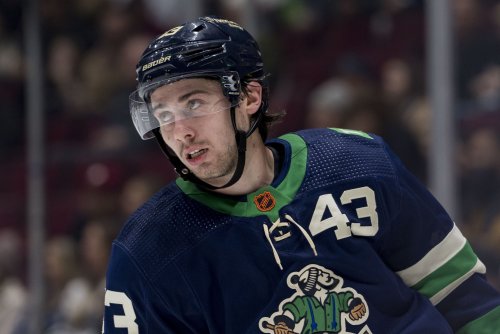



Recommended Comments
Join the conversation
You can post now and register later. If you have an account, sign in now to post with your account.
Note: Your post will require moderator approval before it will be visible.